THE REAL CAUSE OF POLIO – MASS ACIDIC CHEMICAL POISONING!
Updated: May 30
The Picture Below is a Cartoon of the So-Called Polio Virus Which Has NEVER Been Proven to Exist by Anyone, Anywhere, at Anytime in the History of the World!

Abstract:
There is now over 100 years of documented history and research on the Polio virus and whether or not its treatment by inoculation has been successful in eradicating Polio. I am suggesting in this article that there are significant findings based on historical and past and current research, including my own research that the theory of Polio and possibly other modern-day diseases, such as Post-Polio Syndrome, Polio Vaccine-Induced Paralysis, Legionnaires, CNS disease, Cancer and AIDS may be caused by acidic chemical poisoning from DDT (dichloro-diphenyl-trichloroethane) and other related DDT pesticides, acidic vaccinations, and other factors including lifestyle and dietary factors rather than from a lone infectious Poliovirus. The following eleven graphs outline the history of Polio, the production of DDT, BHC, Lead, Arsenic, Polio vaccinations and the author’s theory that chemical poisoning, vaccination, and lifestyle and dietary choices are a more likely cause for the acidic symptoms of Polio, neurological diseases, Cancer, AIDS and VAIDS.

Introduction
Polio in the United States – Graphic Timeline: US 1870 – 1998
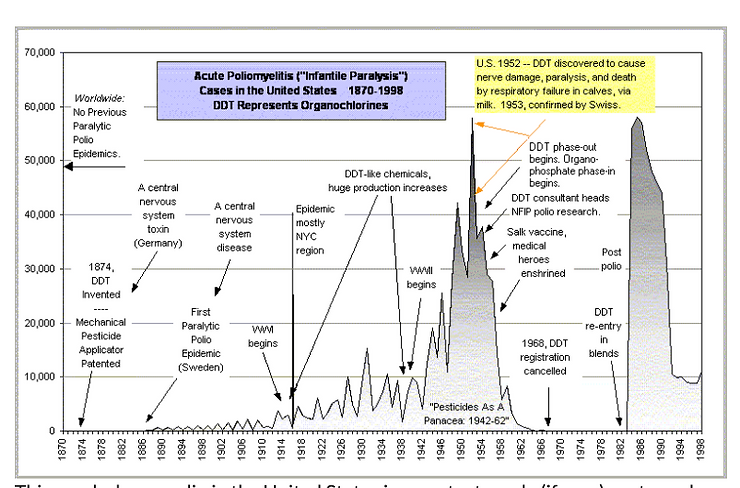
The graph above shows polio in the United States in a context rarely (if ever) portrayed since Biskind, the environmental context. “DDT” and “DDT-like chemicals” are selected for this graph as the least complex way to represent the a broad overview of the evolution of the technology of, and potential for, mass acidic poisoning.
Some prominent organochlorines are chlorobenzene, PCBs (polychlorinated biphenyls) and DDT (dichloro-diphenyl-trichloroethane). Chlorobenzene is a precursor, a foundational compound used in the production of many industrial organochlorines. In the U.S., high production of chlorobenzene began in 1915, soon after the beginning of World War I.

This graph is a compilation of new cases per year (not incidence, as portrayed elsewhere herein).
The data for the last half of the 20th century was gathered from U.S. Vital Statistics. The very earliest numbers, from 1887 to about 1904, and the post polio numbers, are interpolated from the general historical commentary regarding those periods (see bibliography on Homepage and NYC Health Commissioner Haden Emerson’s compilations). While the graph is not perfectly accurate, due to changing methods of diagnoses and record-keeping within the medical system, it does give a reliable overall picture of polio cases in terms of known literature and records.
The source for the U.S. and Swiss discoveries of paralysis in calves is from Van Nostrand’s Encyclopedia of Science and Engineering (1995), vol. 5, p1725. The phrase “Pesticides As A Panacea: 1942-1962” is a subtitle found in Encyclopedia Britannica, Macropaedia (1986). Refer to other graphs (Overview) for specific pesticide comparisons with polio incidence.
In 1915 Hooker Electrochemical began massive, unprecedented production of chlorobenzene (8,200 metric tons per year) and Dow Chemical began large-scale production soon thereafter.
Chlorobenzenes are the basis for picric acid explosive used in World War I. They have also been used in the manufacture of wood treatments, war gas, herbicides, insecticides, bactericide, moth control, and polymer resins.
(Mono) chlorobenzene is the base compound for DDT production. Currently in the U.S., 15 million pounds of p-dichlorobenzene production goes into room deodorants. According to Duesberg, CDC’s investigation into Legionnaires disease ignored toxic cause and created a new false field of study regarding the Legionella bacterium.
The sudden surge of chlorobenzene production coincides in time and place (1915, Niagara Falls) to be considered as probable cause for the epidemic of central nervous system diseases that followed the next year in the New York City region. This epidemic lasted only six months, June to November, with 82% of the cases occurring in just 8 weeks.
While polio literature terms this a world-wide polio epidemic, it was peculiarly a phenomena of the U.S. and was especially prominent in the New York City region. This is strange behavior for a supposedly predatory poliovirus, in an era, a continent, wholly unprotected by miracle vaccines.
The number of new cases for 1916 (40,485) were calculated by multiplying the U.S. incidence rate by the U.S. population. The number seems too high because of Naomi Rogers’ statements that worldwide new cases in 1916 were 27,000, that two-thirds of world polio new cases were in the U.S. and that New York City new cases were 9,000. While this discrepancy exists, the data is still useful for showing relative case numbers and/or incidence for the early 20th century.
Both polio epidemics occurred two years after the beginning of a world war, if we use the dates of the epidemics, 1916 and 1942.
DDT and “DDT-like chemicals” are used to represent the major organochlorine pesticides and organochlorines of similar neurotoxic character. Most of the industrial organochlorines can produce CNS disease symptoms similar to polio. Refer to the Overview for graphs on DDT and other neurotoxic pesticides compared to polio incidence.
Critique of Dominant Images
It certainly appears, from the graph, that the vaccination programs arrived a few years too late to be credited for declining polio case numbers. The programs were close enough, however, for media to shoehorn them into their historical position. This quote from Time Magazine (March 28, 1994) is a typical example: The great postwar epidemic peaked in the U.S. in 1952, when more than 20,000 children were paralyzed by polio and it tapered off in the early ’60s, after the Salk vaccine and then the Sabin oral version were introduced.
This smooth, loaded phrase, framed with glossy photos and clever captions, goes down like lubricated jello. However, if we contain our admiration, and review the actual data, we realize that the great polio epidemic actually occurred from 1942 (or gradually, beginning decades earlier) to 1962, that is, it was not a “postwar epidemic”. The epidemic declined not “in the early ’60s”, but a full decade earlier, in the early 1950s. Polio cases per year did not “taper off… after the Salk vaccine” as Time would have us believe — new cases per year dove resolutely downward two years before the Salk vaccine field trials and four years before the vaccination programs were firmly underway. The decline of polio actually occurred after heated discussions regarding the dangers of DDT that began with in-house government/industry reviews of DDT in 1951, following Biskind and other’s criticism of pesticides which began in 1949.
These discussions were followed by a phase-out through industry compliance, a huge shift of sales to third-world countries, a phase-in of less-persistent pesticides, which was facilitated by legislation in 1954 and 1956, a renewed public image regarding the proper use and dangers of pesticides, the cancellation of DDT registration by 1968, and eventually the official ban of many of the persistent organochlorine pesticides by 1972 (in U.S. and developed countries).
Notice in the chart above that while pesticide production directly correlates with new polio cases per year through every peak and valley, the Salk vaccine enters only after polio’s decline. Salk’s point of entry is not sufficient evidence to be routinely offered as proof for the victory of vaccines over the poliovirus, as Time implies, and as implied by Hayes and Laws, and virtually all other presentations of polio history in whatever media or educational forum.
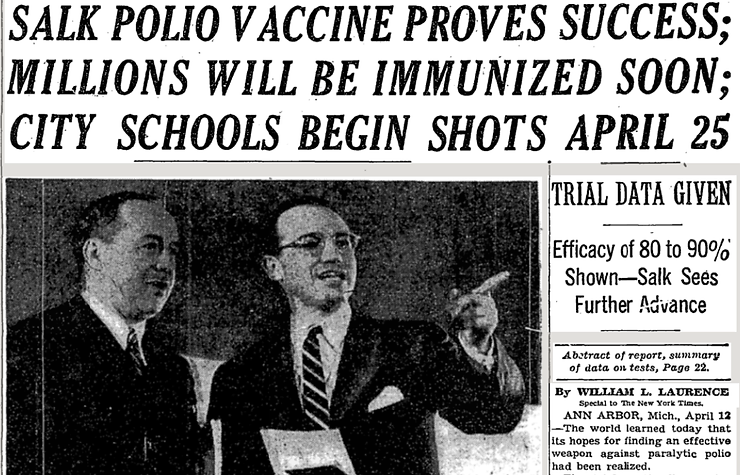
The molecular biologist, Peter Duesberg, in his attempt to give Modern Medicine some credence with regard to virus causality (before refuting HIV causality with AIDS), apparently felt he could assume, in Inventing the AIDS Virus, that, …the sudden, frightening polio epidemic that exploded in the Western nations, was brought home by troops returning from the Pacific theater in 1945.
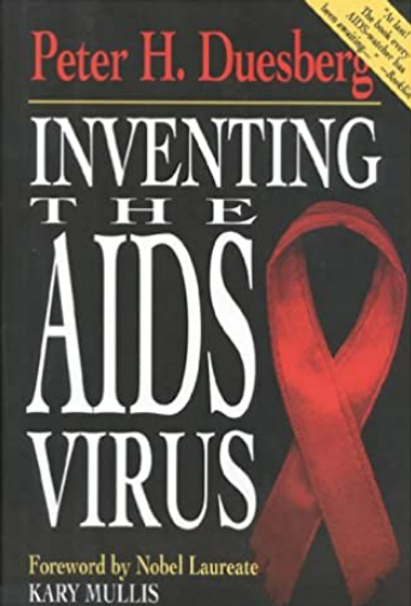
Yet a glance at the graph below shows his statement to be inaccurate. Polio was entrenched in the U.S. long before returning troops, and the increased polio cases per year correlate much more consistently with pesticide production (see overview below) than returning troops. A rise in new cases per year that peaked in 1945 can be clearly attributed to the government’s release of war surplus DDT to the public market in 1945, not vague data about “troops returning from the Pacific theater in 1945”. The troops were heavily treated with DDT years before the U.S. civilian population and as can be expected, in light of the acidic poison-theory, the troops suffered unusually high polio incidence rates when compared to the non-treated populations where they were stationed, and soldiers based in the U.S. (Biskind). The unusual drama and rash assumption that fills this excerpt of Duesberg’s writings gives a sense that he has taken the whole package of ingrained polio images for granted.
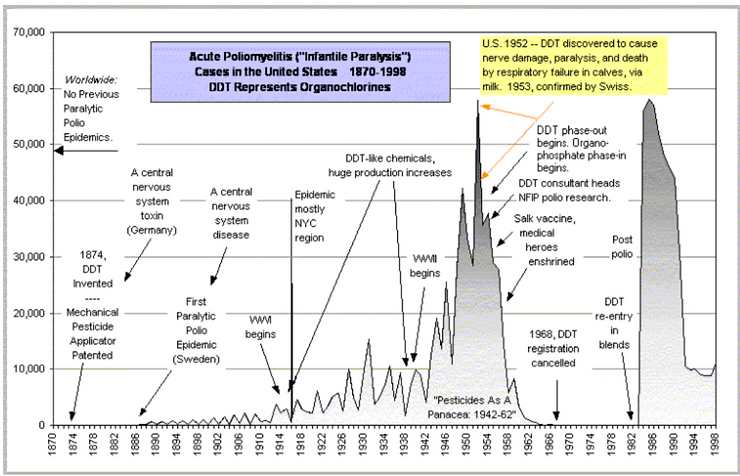
Pesticide Phase-out and Vaccinations Phase-in! What A Business Model for Making Big Bucks!
DDT and BHC were phased out from the developed nations and at the same time vaccination programs were dramatically credited with saving these countries from the ravages of the poliovirus (see Homepage). However, the banned pesticides continued with higher than ever total distribution in the under-developed countries thanks to W.H.O.’s anti-mosquito campaigns, where to this day acute flaccid paralysis (AFP), polio, and DDT/BHC still prevail. DDT application, DDT phase-out programs, and polio vaccination programs are all being directed in these countries concurrently by the World Health Organization with little or no success.
Registration for DDT was canceled in 1968,and DDT was banned by the EPA in 1972 — after the major organochlorines (DDT, BHC) had been gradually phased out of the U.S. market by the chemical industry and replaced with the less environmentally persistent pesticides, the organophosphates.
Post-Polio
In 1983, via new legislation, the highly acidic and poisonous DDT was allowed back into the U.S. marketplace, but only in pesticide blends. Within only a few months of this re-entry, a new kind of polio epidemic suddenly occurred. It was labeled “post-polio”, the re-emergence of polio symptoms in former victims. This has involved approximately 600,000 victims. Like most of the data, this correlation is not even a whisper in the mainstream media.
Central nervous system diseases other than polio continue in the U.S. and throughout the world: acute flaccid paralysis, chronic fatigue syndrome, encephalitis, meningitis, muscular sclerosis, and rarely in humans, rabies.
The harsh realities of government policy are stated in Casarett and Doull’s Toxicology (1996): Although government agencies and industry have been slow in their reevaluation of a vast array of pesticides in use, reassessment often comes in the wake of or concomitant with some recently disclosed adverse environmental or health effect.
This after-the-fact approach to pesticide poisoning is puzzling enough without questioning Casarett and Doull’s careful usage of the words: “often”, “some”, “recently”, and “disclosed”.
The acidic environmental correlations of post-polio are overlooked!
Searching PubMed has been in vain. Recently, however, I found online a paper entitled “The Environmental Aspects Of The Post Polio Syndrome”. It’s website modification date is May, 1999. This article establishes a strong correlation between environmental factors and post-polio (see http://www.aehf.com/articles/A56.htm).
By searching PubMed on “environment and post-polio” a listing for the above article was found: Rea WJ, Johnson AR, Fenyves E, Butler J.
Related Articles: The environmental aspects of the post-polio syndrome.
Birth Defects Orig Artic Ser. 1987;23(4):173-81. No abstract available. PMID: 3620615; UI: 87299998
No other similar articles were found, and no abstract was available, although it presumably could be ordered from PubMed. Poliovirus Presence In Post-Polio According to immunity and vaccination theories, if anyone should be immune to polio, it should be former polio victims, however, numerous studies of post-polio victims have found evidence of so-called active poliovirus when these cases should be associated with DDT chemical poisoning.
From NIH’s PubMed, four studies:PMID: 7611631, UI: 95336052 (London, May, 1995)
This study also quotes “a previous study” PMID: 7611630, UI: 95336051 (Bethesda, MA, May, 1995) PMID: 8818905, UI: 96415998 (Lyon, France, Aug., 1996)
Polio images are projected as if this data doesn’t exist. It does not appear that money is being funneled into these kinds of studies.
Farr’s Law and Koch’s and Rivers Postulated Are the Gold Standard for Validating the Existence for Any Virus!
Farr’s Law requires, for an epidemic to be a valid example of contagion, that the epidemic increase its incidence rates exponentially. Since polio has been ubiquitous since the beginning of human history, its incidence rate should have peaked long ago and universal immunity conferred, if immunity was ever required, and if the poliovirus was actually a predator or even existed!
Polio’s non-compliance with Farr’s Law, Koch’s and Rivers Postulates is explained by viro-pathologists with a unique argument, the inverse of the argument usually given to support the unscientific germ theory.

The argument is that the poliovirus, which has been intimate with mankind since the beginning of history, suddenly became estranged from humans because of modern hygiene, and thus humans lost their natural immunity to a nonexistent virus.
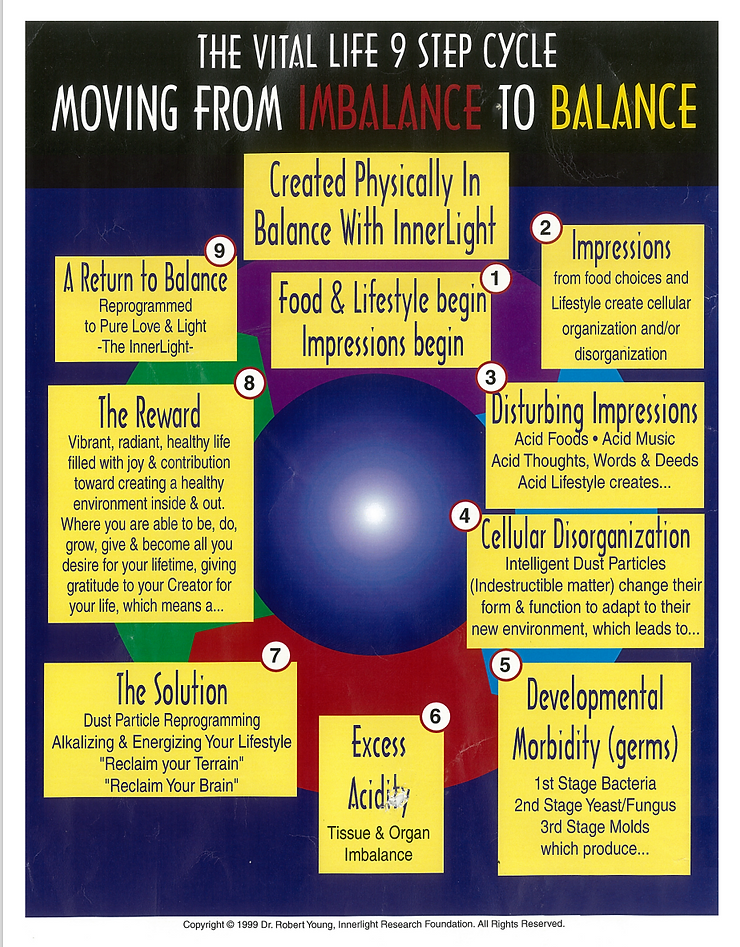
Acidic Foods and Alkaline Foods
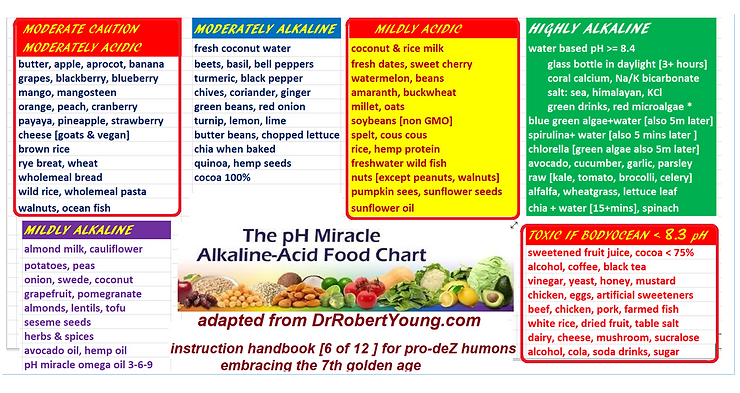
So it is hygiene and the resulting lack of exposure to the virus, which literally means poison that is said to have caused the polio epidemics to rage as never before. It is interesting that for only one brief moment, viro-pathologists are willing to become eco-nutritional types who appreciate the value of natural breast feeding and the importance of the internal alkaline design ecology which GOD conferred positively upon humans by an internal alkaline terrain.
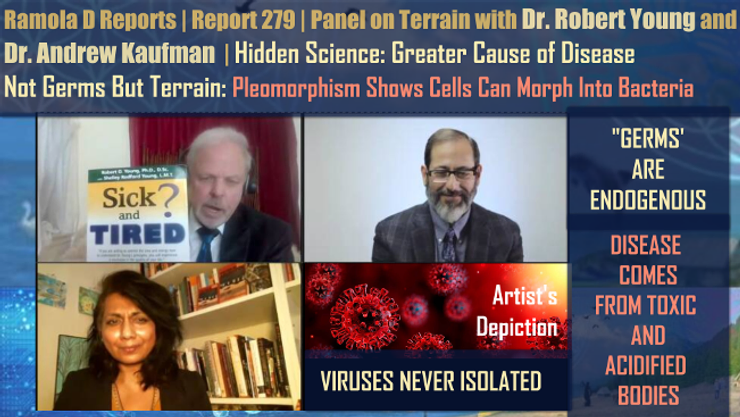
Three different promotions of their inverse argument follow:
The prominent book on polio history by Naomi Rogers, where the inverse argument resides in the title, Dirt and Disease: Polio Before FDR. The language style here is popular.(2)
In Textbook of Child Neurology (1995), John H. Menkes promotes the inverse argument with scientific language style: Poliomyelitis… is less likely to be symptomatic in areas with inadequate sanitation, because poor sanitation is conducive to exposure at an age when lingering transferred maternal immunity can attenuate the clinical picture. (p420)(3)
In the propaganda film, A Paralyzing Fear: The Story of Polio in America. This was funded by the government and pharmaceutical firms and released in 1998.
The New York Times (March 4, 1998) reviews the film. It reinforces the fundamental tenets of polio culture, beginning with a quotation from a section that portrays a “vintage film clip”:”My name is virus poliomyelitis,” intones a cultivated, sinister male voice, as a camera pans over fair-weather clouds from which a hollow shadow emerges carrying the silhouette of a crutch. “I consider myself quite an artist, a sort of sculptor,” the voice continues. “I specialize in grotesques, twisting and deforming human bodies. That’s why I’m called The Crippler.” Having dramatically demonized the poliovirus, the medical cavalry rides to the rescue:…the epidemics grew steadily worse each year, with the number of new cases climbing from 5,000 in 1933 to 59,000 in 1952.
So-called salvation came in1954 with the Salk vaccine…And the inverse argument is now fit to print:
The irony of the rise of polio in the 20th century, the movie reports, is that its prevalence was a result of improved sanitation. In grubbier times, babies and very young children developed antibodies to the disease, which had been around forever. A cleaner environment left increasing numbers of children with no natural immunity.
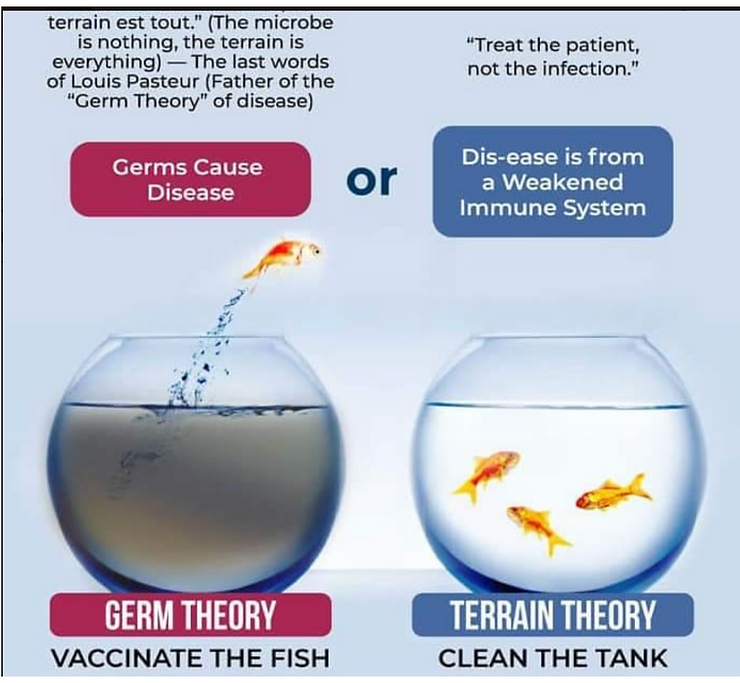
So The New York Times review concisely presents the standard polio images: the predatory virus, paralytic horror, epidemics, salvation via the Salk vaccine, and a unique exception from Farr’s Law. I doubt anyone at NYT actually wrote the piece, rather that it was supplied to the journalist as a suggested article, to be adjusted to the author’s style, thus essentially a customized press release.
Graphic Timeline: U.S. 1912-1970
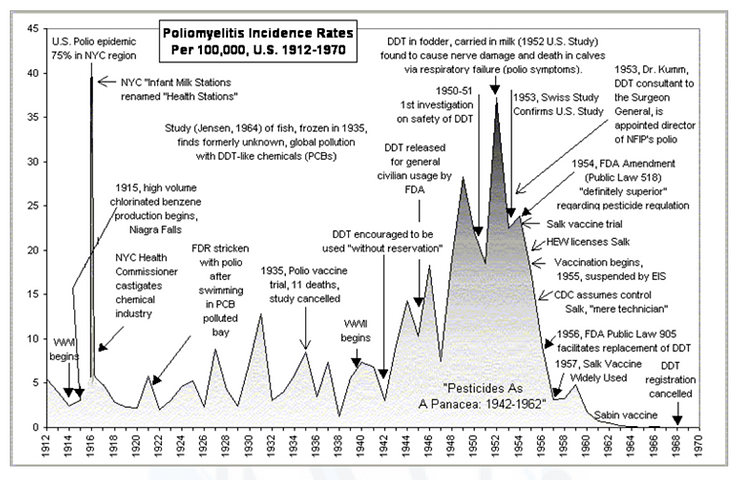
The above graph provides greater detail for the U.S. period of 1912-1970, and summarizes the vaccination issues mentioned above.

[The CDC’s] disease-control mission was increasingly being regarded as obsolete, prompting serious discussions about abolishing the CDC altogether.
The situation changed in 1949 when the CDC brought on board Alexander Langmuir, an associate professor at the Johns Hopkins University School of Hygiene and Public Health. Langmuir was the CDC’s first VIP, bringing with him both his expertise in epidemiology (the statistical study of epidemics) and his high-level connections — including his security clearance as one of the few scientists privy to the Defense Department’s biological warfare program……Langmuir and talked public officials and Congress into giving the CDC contingent powers to deal with potential emergencies… In July of 1951 he assembled the first class of the Epidemic Intelligence Service (EIS), composed of twenty-three young medical or public health graduates. After six weeks of intensive epidemiological training, these EIS officers were assigned for two years to hospitals or state and local health departments around the country. Upon completing their field experience, EIS alumni were free to pursue any career they desired, on the assumption that their loyalties would remain with the CDC and that they would permanently act as its eyes and ears. The focus of this elite unit was on activism rather than research and was expressed in its symbol — a shoe sole worn through with a hole. According to British epidemiologist Gordon Stewart, a former CDC consultant, the EIS was nicknamed the “medical CIA.”
The Director of Polio Research
The National Foundation For Infantile Paralysis (NFIP) used the “The March Of Dimes” to fund its polio research which lead to the Salk vaccine field trials in 1954. The Director Of Polio Research was Dr. Henry Kumm.
According to the brief sketch in American Journal of Digestive Diseases, May 1953, Dr. Kumm was born in Wiesbaden, Germany. He came to the U.S. via Britain and became an American citizen in 1945. He had spent 23 years on the staff of the Rockefeller Foundation for Medical Research before joining the NFIP in July, 1951.
In April 1953, Dr. Kumm replaced Dr. Harry M. Weaver as Director Of Polio Research at NFIP.
During World War II he had served as civilian consultant to the Surgeon General of the U.S. Army in Italy, directing field studies for the use of DDT against malarial mosquitoes in the marshes near Rome and Naples. As Dr. Kumm is a prominent DDT consultant, there is definitely a conflict of interest for this key player in polio research.
Earlier in his career Dr. Kumm worked extensively on transmission modes of the disease, He also worked with the Jamaican Yaws Commission.
Scobey, refers to allegations that arsenic injection treatments for years had caused an epidemic of polio in Samoa in 1936. It is not presently known to what extent these events also could have compromised Dr. Kumm’s position regarding polio.
Timeline: U.S. 1945-1957
1945, DDT was released to public and aggressively promoted, against FDA advice.
March, 1949, Biskind’s “Poisoning and the Elusive ‘Virus X’” was published.April, 1949,Biskind’s study on neuropsychiatric manifestations of DDT was published.1949 (approx.), Biskind was attacked with blatantly false data.
December 12, 1950, Biskind presented “Statement” on DDT to the House Of Representatives.
1950 and 1951, pesticide discussions began with government and industry.
May, 1951, Scobey’s “Is The Public Health Law Responsible For The Poliomyelitis Mystery?”, was published.
July, 1951, the first Epidemic Intelligence Service (EIS) class was assembled. EIS agents began movement into key positions — in hospitals, government health departments, and media.
July, 1951, leading DDT consultant, Dr. Kumm, joined the NFIP, as Director Of Polio Research.
1952, the Formulation of the polio vaccine begins. Tens of millions of doses of polio vaccines produced from virus grown in monkey cells infected with SV-40 (Simian Virus #40). Scientists ‘perform experiments in laboratories to determine the correct doses of antigen and supplementary chemicals to use in the polio vaccine. (Ironically, since the scientific premise of vaccination is faulty, a ‘correct dose of antigen and chemicals’ does not exist).
April, 1952, Scobey’s “Statement” on the “Poison Cause Of Poliomyelitis And Obstructions To Its Investigation” to the House Of Representatives was published.
1952, U.S. DDT/milk studies found DDT causal for paralysis in calves.
1952, DDT and other persistent pesticides began rapid phase-out in U.S. and other developing countries.
1953, Swiss DDT/milk studies found DDT causal for paralysis in calves.
March 26, 1953, Salk vaccine discovery announced, after evaluation of 600 vaccinated persons (Patenting The Sun).
April, 1953, leading DDT consultant, Dr. Kumm, appointed by Basil O’Connor to Director of Polio Research for NFIP.
May, 1953, Biskind alleged conspiracy:
…virtually the entire apparatus of communication, lay and scientific alike, has been devoted to denying, concealing, suppressing, distorting and attempts to convert into its opposite, the overwhelming evidence. Libel, slander and economic boycott have not been overlooked in this campaign. (Archive Of Pediatrics)
1954, Salk vaccine field trials began. 423,000 second grade children were vaccinated.
1954, Salk vaccine begins to be given to school children in Philadelphia.
1954, Parke-Davis pharmaceutical company combines the DPT shot with Polio vaccine. The new combination of four vaccines is called Quadrigen. (See 1959).
1954, Reward of $30,000 offered to anyone who proves polio vaccine not a fraud. Not one person was able to claim the reward.
1954, Mrs. Oveta Culp Hobby, Secretary of Health, Education and Welfare, allows a press photo to be taken during a ceremony declaring Salk vaccine safe.
1954, Polio rate caused by the vaccine accelerates ten-fold in Massachusetts.
1954, Eli Lilly company begins renovation of a five-story building in Indianapolis in July1954, for the production of Salk vaccine. It is in full production by October of 1954. Wyeth, Parke-Davis and others follow suit.
March, 1955, Salk vaccine field trial declared “successful”, HEW licensed the Salk vaccine. Salk promoted as “hero”.
April 12, 1955, Salk vaccine began large scale.
April 12-25, 1955, Walter Winchell, radio personality, warned of impending vaccine disaster.
1955, Georgia State public health officers meet in Atlanta (May 1955) to discuss what was going wrong with the Salk vaccine program. A U.S. Public Health scientist at the meeting told the group that ‘he was not permitted to disclose what had happened because it would jeopardize the investment of the pharmaceutical firms in the vaccine program.’
The vaccination program encountered disaster via faulty vaccines manufactured by the Cutter Laboratory in California, which were discovered by EIS. The incidence rate (17 per 100,000 for one month) was higher than with that found with other manufacturer’s vaccines, yet this rate was not at all an impossibility since incidence rates of over 400 per 100,000 per month were found in Detroit in 1958. The EIS found 204 Cutter polio cases, by assuming contagion, and then highly publicized these cases (Jane Smith, Patenting The Sun) though only 79 cases were documented (Fields Virology). It was decided that because Cutter did not filter its vaccine thoroughly, that tissue particles had contributed to allergic reactions and live poliovirus.
Vaccinations were halted. May 13, vaccination program resumed “piecemeal”. Eventually over 5 million persons were vaccinated. Salk was demoted to “mere technician”. CDC and EIS assumed control of vaccinations.
1955, Idaho brings its Salk vaccination program to a halt on July 1, 1955.
July 12, 1955, Utah also stops the vaccination program.
1955, Massachusetts reports 642% increase in polio since vaccinations began in 1954 with vaccination of 130,000 children. In response, the National Foundation for Infantile Paralysis states that the increase in cases was due to the fact that ‘no children were vaccinated there.’1955 Massachusetts bans the sale of Salk vaccine.’
1955, US Surgeon General Scheele admits in a closed session of the AMA that ‘Salk polio vaccine is hard to make and no batch can be proven safe before given to children’. Despite this fact, the public is told that the vaccine is safe. The government announces that it has the intention to vaccinate 57 million people before August 1955.
August 1, 1955, the “aggressive” James Shannon was promoted to director of NIH. He was formerly against the private control of polio research and vaccination programs.
Late 1955, March Of Dimes announced that since 1938 it had contributed $74,000,000 towards poliovirus research and $174,700,000 towards treatments for virus-diagnosed polio cases.
1955, American Cancer Society advertising circular states ‘cancer will strike one of every four persons now living. More children from 3 to 15 years of age die of cancer than from any other disease.’ (50 years before, cancer was unheard of in children). According to the ACS, they are predicting 6.4 million deaths from cancer, compared with 128,000 in 1933–an increase of 6.2 million cases in 22 years. Vaccination, pesticide use and chemical pollution are the main factors that have increased since 1933.
1956, the Gallup Poll claims that public confidence in the Salk vaccine is 36%. NFIP and the Salk vaccine are in a “valley”. Vaccines are thoroughly tested by federal government, yet vaccination programs continue in the U.S.
1956-1957, NIH, under James Shannon, “takes over polio research”.
1956, Seventeen states in the United States reject their government-supplied Salk polio vaccine.
1956, US government appropriates $53.6 million to ‘aid states in providing free vaccine to people under 20 years of age’.
1956, Idaho health director Peterson states that polio only struck vaccinated children in areas where there had been no cases of polio since the preceding autumn. In 90% of the cases, the paralysis occurred in the arm in which the vaccine had been injected.
1956, American Public Health Service announces 168 cases of polio and 6 deaths among those vaccinated. Censorship is then imposed on the reporting of reactions to Salk vaccine.
1956, Oral polio vaccine developed further by Sabin.
1956, The US Public Health Service and the National Foundation for Infantile Paralysis (Rockefeller) put on a drive to ‘sell’ Salk polio vaccine to the public.
1957, Salk vaccine promoted heavily, implemented in Canada and England.
By the end of 1958, 72,000,000 had been inoculated. Infants under 5 comprised 51.7% of all paralytic polio cases. Only 55% of persons, below age 40 were vaccinated (52 million). The poliovirus could not be associated with 26% of the non-paralytic polio cases, nor could it be associated in 14% of the paralytic cases. Considering that 47.5% of the cases were non-paralytic, this translates to 42% that could not be protected by the Salk vaccine because their polio was not caused by the poliovirus. This is an argument that all polio is not caused by the poliovirus.
1959, “Federal action” is used against a chiropractor to prevent dissemination of anti-vaccination information through the U.S. mail (CDC, Polio Packet, 1959).
To the present, the Salk vaccination program is fraudulently promoted as victorious, and serves as a proof for the poliovirus theory. It also serves to bolster all other germ theories (regarding predatory microbes) and the general image of Modern Medicine. The pesticide/acid or terrain theory is characterized as irresponsible and dangerous.
Needless to say, the charge that DDT predisposed to poliomyelitis was dropped after the disease was controlled through the use of vaccines. …such irresponsible claims could produce great harm and, if taken seriously, even interfere with scientific search for true causes and realistic means of preventing the conditions in question. (Hayes and Laws (1991))
However, Hayes and Laws statement, above, is invalid because,
1) The vaccination programs are irrelevant to the decline of polio, while,
2) pesticides correlate perfectly with polio,
3) Dr. Biskind did not drop his charges, he alleged conspiracy “to convert into its opposite, the overwhelming evidence.” The often published Biskind evidently was relegated to self-publishing after1955,
4) The polio virus has never be isolated and does NOT even exist as outlined in my article, “THERE IS NO EVIDENCE of the EXISTENCE for ANY VIRUS ISOLATED by ANYONE ANYWHERE in the WORLD!,” found at the following link: https://www.drrobertyoung.com/post/lies-more-lies-and-damn-lies-from-those-we-are-mandated-to-trust,
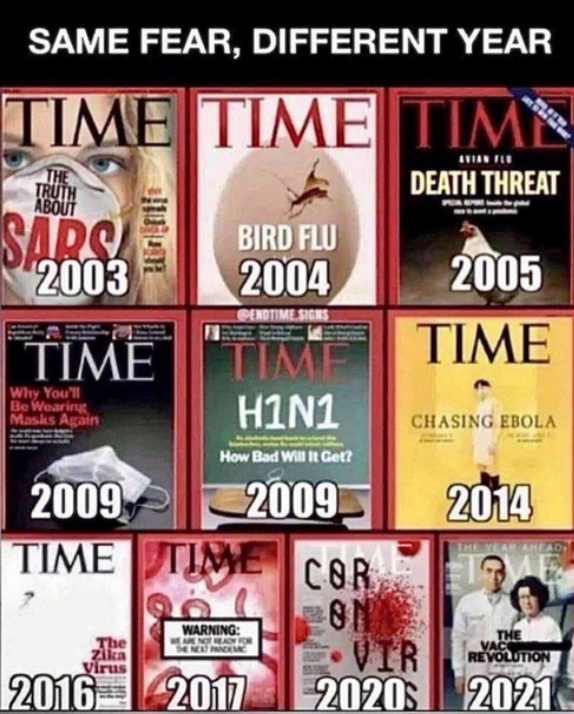
5) The CDC NOW Admits in Writing They DO NOT HAVE ANY PURIFIED ISOLATED Viruses, Including the Polio Virus!
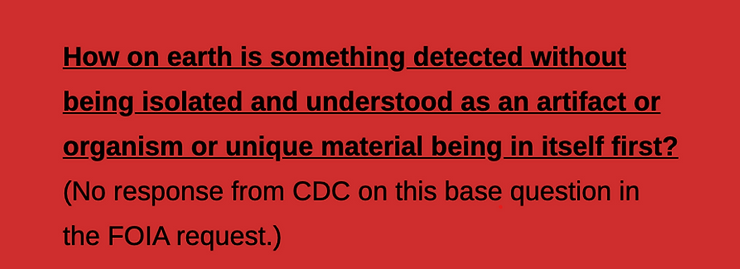
We made the request to the Center of Disease Control (CDC) for any evidence pertaining to ANY purified isolated virus, proving their existence by following the ‘scientific method’ of Koch’s and/or Rivers Postulated for CoV – 2 and 19, MERS, Influenza, Polio, Measles, HIV, XMRV, HTLV-1, HTLV-III/LAV, HPV, Ebola, Zika, just to name a few of the so-called viruses, disclosed under the Freedom of Information Act (FOIA).
The request was made to CDC/ATSDR FOIA Chief Officer Mr. Robert Andoh, to locate and deliver ANY records, research and/or findings for ANY “viral” purification and isolation (by anyone, anywhere, anytime in the World) from a patient sample via maceration, filtration and/or the use of an ultracentrifuge or what is called the ‘Gold Standard’ for isolating and identifying a pathological micro or nana organism. The ‘Gold Standard’ for isolating and identifying the pathology of viruses or microbes is referred to as Koch’s and Rivers Postulates which was established many years ago.
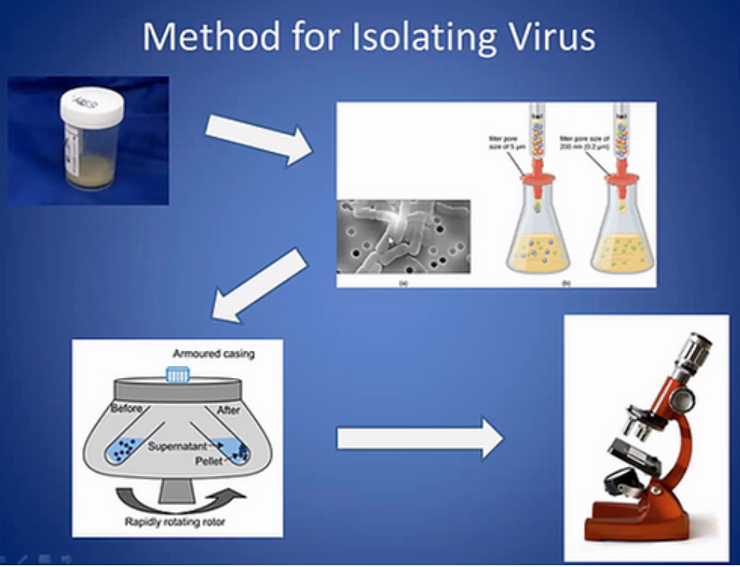
Straight Forward Answers From the CDC FOIA CHIEF – There are “NO Records of Any Kind” For Any Virus!
The CDC Chief FOIA, Mr. Roger Andoh provided straightforward responses to each one of our requests, admitting in writing that they have NO RECORD of ANY KIND, for the following so-called phantom “viruses”, including CoV – 2 -19, HIV, HPV, XMRV, HTMV-1, HTMV-111/LV, Measles, Influenza, MERS, EBOLA, ZIKA and POLIO!
You can read the FOIA responses from Mr. Robert Andoh by going to the following link at:
June 11 2021, CDC admits they have no record of any “POLIO virus” purified from any patient sample via maceration, filtration and use of an ultracentrifuge, by anyone, anywhere on the planet, ever:
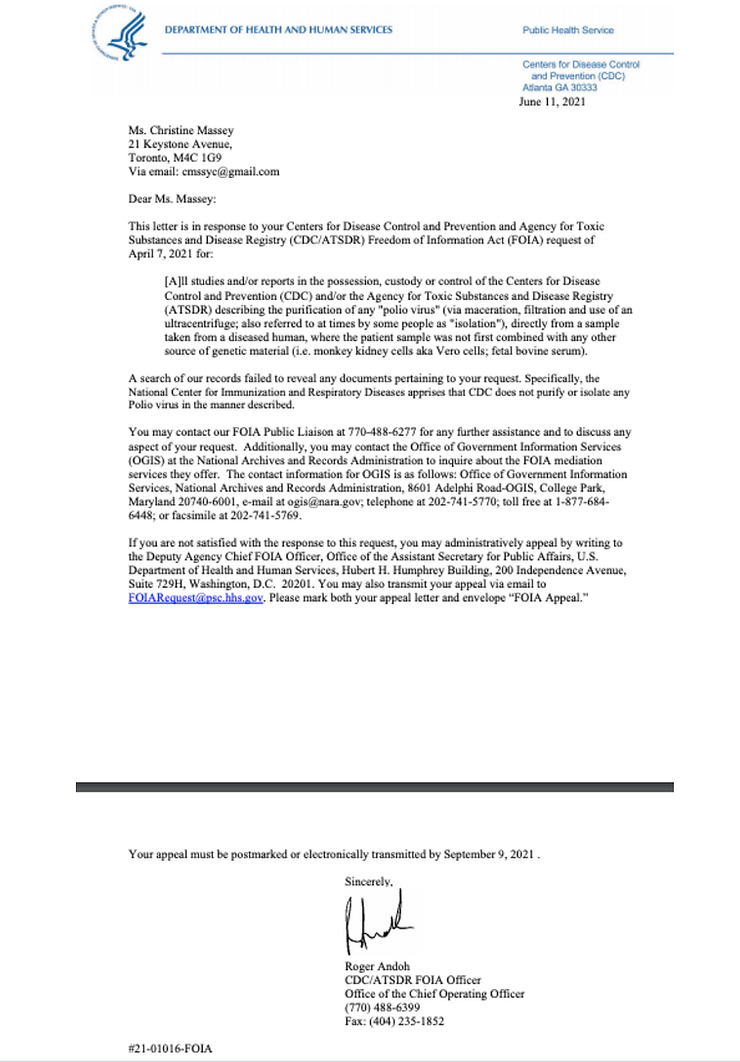
Summary
The non-funded, ostracized theory of poison causality far exceeds all other theories in simplicity, exactitude, and directness regarding correlations within all data areas: dosage, physiology, etiology, epidemiology, economics, and politics. The historical non-relationship between vaccination and paralytic polio can be viewed graphically, in terms of the official numbers:
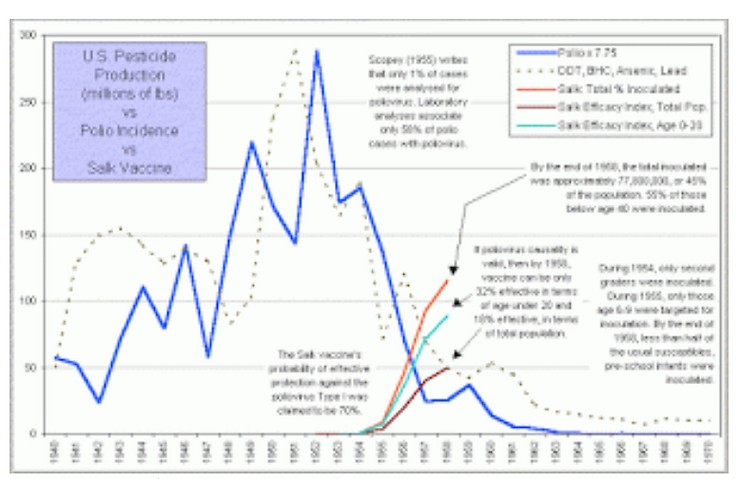
Note: Persistent (low biodegradability) pesticides are shown above. See Salk Efficacy Index for method.
To read the entire article go to: https://medcraveebooks.com/view/The-Possible-Cause-of-Polio-Post-Polio-CNS-PVIPD-Legionnaires-AIDS-and-the-Cancer-Epidemic-Mass-Acidic-Chemical-Poisoning.pdf
To order the entire article, The Possible Cause of Polio, Post-Polio, CNS, PVIPD, Legionnaires, AIDS and the Caner Epidemic – Mass Acidic Chemical Poisoning go to:
https://www.phmiracleproducts.com/collections/books-audio-video/products/the-possible-cause-of-polio-post-polio-cns-pvipd-legionnaires-aids-and-the-cancer-epidemic-booklet
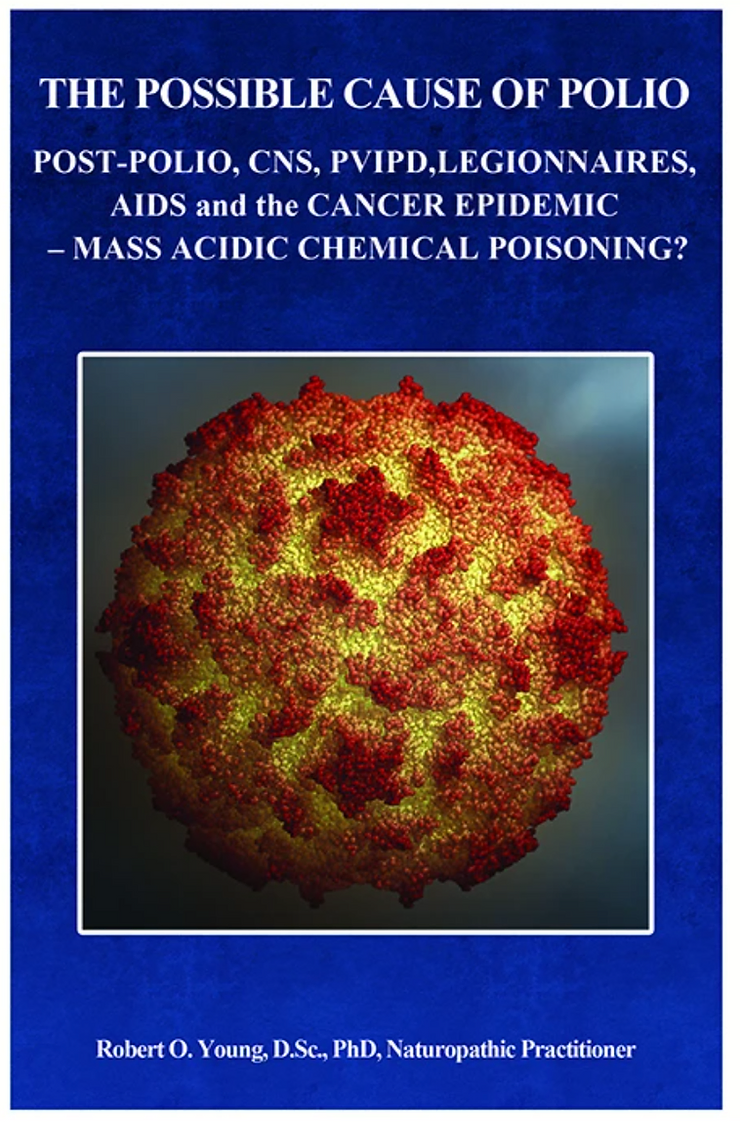
Related
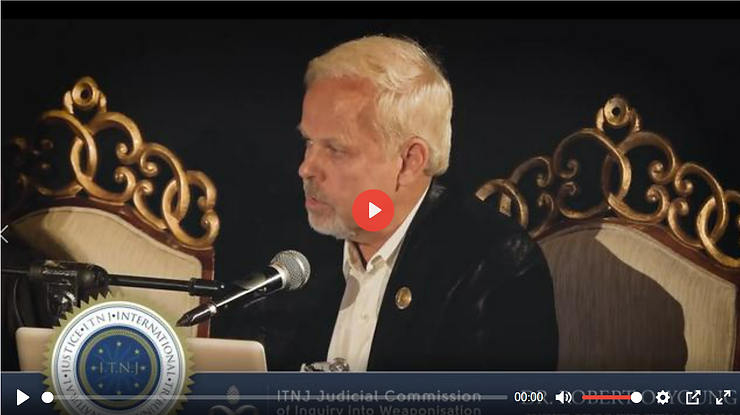
Powerful and inspiring and hugely informative heartfelt testimonial from Dr. Robert Young presenting a comprehensive testimonial on the harms of Big Pharma and the poisons in environment and lifestyle which cause disease, while Germ-Theory lies and posits Germs as arbiters of disease, on the true science of Terrain-Theory presented by Antoine Bechamp, where Germs can be seen to be the consequence and effect of disease, and Dr. Young’s own personal discovery of Pleomorphism through the microscope where he witnessed red blood cells transforming into bacteria and back again, based on the pH conditions of the fluid in which they are bathed, whether unhealthy and poisoned, or healthy and aligned with Nature. Much more in here, please watch and share widely!
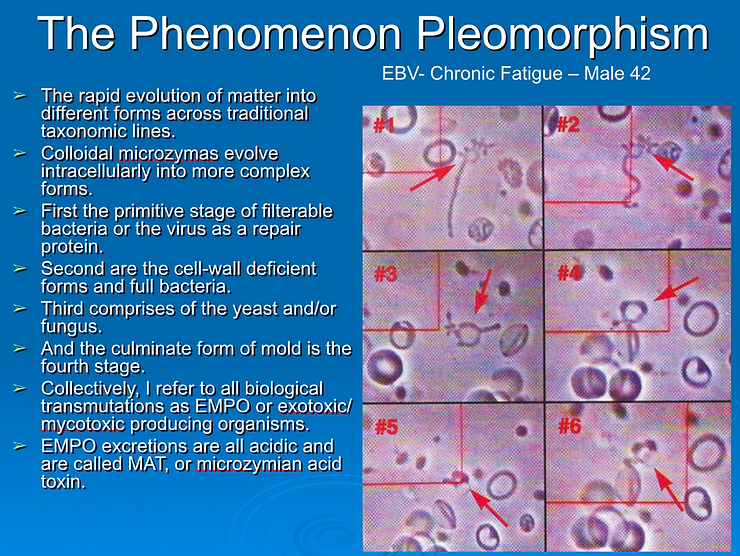
YOU NEED HELP from Dr. Robert O. Young’s pH Miracle Protocol and Dr. Robert O. Young NEEDS YOUR HELP!
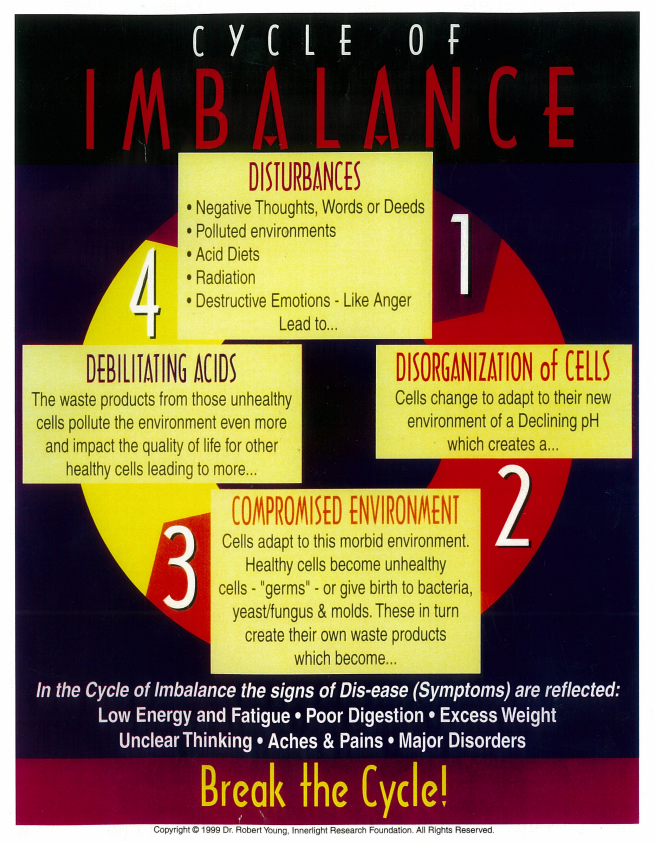

Please Support Dr. Robert O. Young with YOUR PRAYERS AND DONATIONS! https://www.givesendgo.com/G2Z76

References:
[1] Morton S. Biskind, MD. “Public Health Aspects of the New Insecticides”. American Journal of Digestive Diseases, New York, 1953, v 20, p331.
[2] Handbook of Pesticide Toxicology, edited by Wayland J. Hayes, Jr. and Edward R. Laws, Academic Press Inc., Harcourt Brace Jovanovich, Publishers, San Diego, 1991, p769
[3] Toxicological Profile: for DDT, DDE, and DDE. Agency for Toxic Substances and Disease Registry, September 2002.
[4] U. Beck, E. Löser “Chlorinated Benzenes and other Nucleus-Chlorinated Aromatic Hydrocarbons” Ullmann’s Encyclopedia of Industrial Chemistry, 2012, Wiley-VCH, Weinheim.
[5] Chlorobenzene”. Immediately Dangerous to Life and Health. National Institute for Occupational Safety and Health (NIOSH)
[6] U.S. Vital Statistics, U.S. Government Printing Office, Washington, D.C.
[7] Historical Statistics of the U.S., The U.S. Government Printing Office, Washington, D.C.
[8] Van Nostrand’s Encyclopedia of Science and Engineering (1995), vol. 5, p1725. The phrase “Pesticides As A Panacea: 1942-1962” is a subtitle found in Encyclopedia Britannica, Macropaedia (1986).
[9] Thomas, Robert E. (1955), Salt & Water, Power & People: A Short History of Hooker Electrochemical Co. Niagara Falls, NY: Hooker Chemical Co.
[10] Booth, Gerald (2000), “Ullmann’s Encyclopedia of Industrial Chemistry – Nitro Compounds, Aromatic”. doi:10.1002/14356007.a17_411. ISBN 3527306730
[11] Weber, Manfred; Weber, Markus; Kleine-Boymann, Michael (2004). “Ullmann’s Encyclopedia of Industrial Chemistry – Phenol”. doi:10.1002/14356007.a19_299.pub2. ISBN 3527306730.
[12] Haller, H. L., Bartlett, P. D., Drake, N. L., and others: The Chemical Composition of Technical DDT, American Chemical Society, Journal, volume 67, pages 1591- 1602, 1945.
[13] Jo-Yu Chin, Christopher Godwin, Chunrong Jia, Thomas Robins, Toby Lewis, Edith Parker, Paul Max, and Stuart Batterman, “Concentrations and Risks of p-Dichlorobenzene in Indoor and Outdoor Air,” Indoor Air, 2013 Feb; 23(1): 40–49, Published online 2012 Jul 18. doi: 10.1111/j.1600-0668.2012.00796.x.
[14] Duesberg, PH, “Inventing the AIDS Virus,” Regnery, (1996). ISBN 0-89526-399-8.
[15] Icon Group International (Author), Chlorobenzene: Webster’s Timeline History, 1851 – 2007 May 17, 2010
[16] Ibid
[17] Ibid
[18] Risse, GB (1988). Fee E, Fox DM, eds. Epidemics and History: Ecological Perspectives. in AIDS: The Burden of History. University of California Press, Berkeley. ISBN 0-520-06396-1.
[19] A Disease of Cleanliness: Polio in New York City, 1900-1990, in David Rosner, ed., Hives of Sickness: Public Health and Epidemics in New York City Rutgers University Press, 1995, pp. 115-130.
[20] McDonough, F., The Origins of the First and Second World Wars (Cambridge Perspectives in History), Cambridge University Press, August 28, 1997.
[21] Goel, A, Aggarwal, P, “Pesticide Poisoning,” Natl Med J India. 2007 Jul-Aug; 20(4):182-91.
[22] Ibid.
[23] Biskind, MS (1953) “Public Health Aspects of the New Insecticides,” American Journal of Digestive Diseases 20: 331-341.
[24] TIME Magazine, U.S. Edition, March 14, 1994 Vol. 143 No. 11. [25] Baily, J. W.: J. Am. Vet. M. A. 113: 251, Sept. 1948.
[26] Biden-Steele, K. and Stuckey, R. E.: “Poisoning by DDT Emulsion: Report of a Fatal Case”, Lancet, 2: 235-236, Aug. 17, 1946.
[27] Biskind, M. S.: “DDT Poisoning and X Disease in Cattle”, J. Am. Vet. M. A. 114: 20, Jan. 1949.
[28] Biskind, M. S.: “DDT Poisoning a Serious Public Health Hazard”, Am. J. Dig. Dis. 16: 73, Feb. 1949.
[29] Biskind, M. S.: “DDT Poisoning and the Elusive ‘Virus X’: A New Cause for Gastro- Enteritis”, Am. J. Dig. Dis. 16: 79, March 1949.
[30] Boyd, C. L.: “A Report on “XX Disease in Texas”, J. Am. Vet. M. A. 113: 463, Nov. 1948.
[31] Cameron, C. R., and Burgess, F.: “The Toxicity of DDT”, Brit. M. J. 1: 865-871, June 23, 1945.
[32] Carte; R. H., Hubanks, P. E., et al: “Effect of Cooking on the DDT Content of Beef”, Science, 107: 347, April 2, 1948.
[33] Case, R. A. M.: Toxic Effects of DDT in Man”, Brit. M. J., 2: 842-845, Dec. 15, 1945.
[34] Council on Pharmacy and Chemistry, A. M. A.: “Health Hazards of Pesticides”, J. A. M. A. 137: 1603, Aug. 28, 1948.
[35] Crescitelli, F., and Gillman, A.: “Electrical Manifestations of Cerebellum and Cerebral Cortex Following DDT Administration to Cats and Monkeys”, Am. J. Physiol., 147: 127- 137, Sept. 1946.
[36] Deederer, C.: “DDT Toxicity”, M.Rec. 161: 216-220, April 1948
[37] Domenici, T. J.: “Hepatitis without Jaundice and without Hepatomegaly”, N. Eng. J. Med. 240: 88, Jan. 20, 1949
[38] Dunn, J. E., Dunn, J. C., and Smith, R. S.: “Skin Sensitising Properties of DDT for 31 Guinea Pig”, Pub. Health Rep. 61: 1614-1620, 1949.
[39] Editorial: Pesticides: “Chemical Contaminants of Foods”, J.A.M.A. 137: 1604, Aug. 28, 1948.
[40] Fitzhugh, O. G., and Nelson, A. A.: “The Chronic Oral Toxicity of DDT”, J. Pharm.acol. and Exper. Therap. 89: 18-30, Jan. 1947.
[41] Gamier, G.: “Treatment of Scabies with DDT”, .Presse Med. 56: 458, June 23, 1948. [42] Garett, ii. M., “Toxicity of DDT for Man”, Alabama St. M. A. J., 17: 74, Aug. 1947.
[43] Globus, J. H.: “DDT Poisoning; Histopathologic Observations on the Central Nervous System in So-Treated Monkeys, Dogs, Cats and Rats”, J. Neuropath. 7: 418-431, Oct. 1948.
[44] Haymaker, W., Ginzler, A. M., and Ferguson, J. L.: “Toxic Effects of Prolonged Ingestion of DDT on Dogs, with Special Reference to Lesions in Brain”, Am. J. M. Sc. 212: 423, Oct. 1946.
[45] Hill, K. R., and Daniiani, C. R.: “Death Following Exposure to DDT, Report of a Case”, New Eng. J. Med., 235: 897-899, Dec. 19, 1946.
[46] Hill, K. 3. and Robinson, G.: “A Fatal Case of DDT Poisoning in a Child, with an Account of Two Accidental Deaths in Dogs”. Brit. M. J. 2: 845-847, Dee. 15, 1945.
[47] Ingle, L.: “Toxicity of Chlordane to White Rats”, J. Econ. Entomol. 40: 264-268, 1947.
[48] Jandorf, B. J;. Sanett, H. P., and Bodansky, Oscar: “Effect of Oral Administration of DDT on Metabolism of Glucose and Pyruvie Acid in Rat Tissues”, J. Pharmaeol. and Exper. Therap. 88: 333-337, Dec. 1946.
[49] Jenkins, D. W.: “A Review of the Insecticide Hexachloro-cyclohexane (‘666’)”, Office of Technical Services, U. S. Dept of Commerce, Washington, D • C., No. PB 4034, Med. Div. Rept. No. 56, Sept. 26, 1945.
[50] Kempe, H. E.: “Progress Report on Benzene Hexachloride for the Destruction of Sheep Scab Mites”, Vet. Med., Feb. 1948, pp. 76-79.
[51] Kirk, H.: Vet. Red. 58: 43, 1946.
[52] Kirk, H.: “DDT in Canine Practice”, Vet. Med. Feb. 1947, PP. 76-78.
[53] Lawhon, G. J., Jr.: “X Disease in South Carolina”, N. Am. Vet. 29: 643, Oct. 1948.
[54] Leider, M.: “Allergenic Eczematous Contact-Type Dermatitis Caused by DDT”, J. Invest. Dermatol. 8: 125-126., March 1947.
[55] Lillie, R. D., Smith, M. I., and Stohlman, E. F.: Pathologic Action of DDT and Certain of its Analogs and Derivatives”, Arch. Path. 43: 127-142, Feb. 1947.
[56] Mackerras, I. M., and West, R. F. K.: “DDT Poisoning in Man”, M. J. Australia, 1: 400-401, March 23, 1946.
[57] Mobbs, J. F.:” Toxicity of Hexaehloroeyclohexane in Scabies, J.A.M.A. 138: 1253, Dec. 25, 1948. Personal Communication.
[58] Morrill, C. C.: “Hyperkeratosi.s or X Disease”, N. Am. Vet. 29: 642, Oct. 1948.
[59] Neal, P. A., Sweeney, T. B., Spicer, S. S., and von Oettingen, W. F.: “The Excretion of DDT in Man, Together with Clinical Observations”, Pub. Health Rep., 61: 403, March 22, 1946.
[60] Neal, P. A., von Oettingen, W. F., Smith, W. W., et al: Toxicology and Potential Dangers of Aerosols, Mists and Dusting Powders Containing DDT”, Pub. Health Rep. Suppl. 177, 1944.
[61] Neal, P. A., von Oettingeu, W. F., Dunn, R. C., and Sharpless, N. E.: “Toxicology and Potential Dangers of Aerosols and Residues from Aerosols Containing 3 Percent of DDT. Second Report, ibid., Suppl. 183, 1945.
[62] Nelson, A. A., Draize, 3. H., Woodard, G., et al: “Histopathological Changes Following Administration of DDT to Several Species of Animals”, U. S. Pub. Health Rep. 59: 1009, Aug. 4, 1944.
[63] Neve, Helen: “Toxic Effects of DDT on a Cat”, Vet. Rec. 58: 43, 1946. Vet. Med., Feb. 1947, p. 78.
[64] Niedelman, M. L.: “Contact Dermatitis Due to DDT”, Occup. Med. 1: 391-395, April 1946.
[65] Radeleff, R. D.: “DDT Spray Outmodes Dipping Vat”, Vet. Med. Oct. 1947, pp. 372- 373.
[66] Radeleff, R. D.: “Chlordane Poisoning: Symptomatology and Pathology, Vet. Med. Aug. 1948, pp. 342-347.
[67] Robinson, J. H.: “Harvest Analysis of DDT Residues”, Food Packer, 29: 50-53, 1948.
[68] Riker, W. F., Jr., Huebner, Virginia, R., Raska, S. B., and Cattell, McKeen: “Studies on DDT, Effects on Oxidative Metabolism”, J. Pharmacol. and, Exper. Therap., 88: 327- 332, Dec. 1946.
[69] Sarrett, H. P., and Jandorf, B. J.: “Effects of Chronic DDT Intoxication in Rats on Lipids and Other Constituents of Liver”, ibid., 91: 340-344, Dec. 1947.
[70] Smith, M. I.: “Accidental Ingestion of DDT, with a Note on its Metabolism in Man”, J.A.M.A., 131: 519-520, Juno 8, 1946.
[71] Smith, M. I., and Stohlnian, E. F.: “Pharmacologic Action of 2, 2 his (p-Chlorophenyl) 1,1,1-Trichloroethane and its Estimation in the Tissues and Body Fluid”, Pub. Health Rep., 59: 984, July 28, 1944.
[72] SmIth, M. I., and Stohlman, E. F.: “Further Studies on the Pharmacologic Action of DDT”, ibid., 60: 289, March 16, 1945.
[73] Smith, N. 3.: “Death Following Accidental Ingestion of DDT”, J.A.M.A., 136: 469- 471, Feb. 14, 1948.
[74] Smith, R. F., Fullmes, O. H., and Messenger, P. S.: “DDT Residues on Alfalfa Hay and Seed Chaff”, J. Econ. Entomol. 41: 755-8, 1948.
[75] Strycker, G. V., and Godfroy, B.: “Dermatitis Resulting from Exposure to DDT”, J. Missouri St. M. A., 43: 384-386, June 1948.
[76] Taylor, E. L.: “Danger of Ununction with DDT”, Lancet, 2: 320, Sept. 8, 1945.
[77] Telford, H. S., and Guthrie, J. E.: “Transmission of the Toxicity of DDT Through the Milk of White Rats and Goats”, Science, 102: 647, Dec. 21, 1945.
[78] Thoungh, TI. C.: “Poisonous Effects of DDT on Humans”, Indian M. Ga:. 81: 432, Oct. 1946.
[79] U. S. Dept. Agriculture, “Bureau of Entomology and Plant Quarantine: Now Insecticides in Grasshopper Control”, Bull. E-722, May 1947. Bull. EC.1, March 1948.
[80] U. S. Dept. Agriculture, Bureau of Entomology and Plant Quarantine: “New Insecticides for Controlling External Parasites of Livestock”, Bull. E. 762, Dec. 1948.
[81] Westerfteld, C.: “The Use of DDT in Medicine-A Review”, Vet. Med., Oct. 1946, pp. 355-360.
[82] Wigglesworth, V. D.: “A Case of DDT Poisoning in Man”, Brit M. J. 1: 517, April 14, 1945.
[83] Wilson, J. B.: Are Pesticides Making Your Food Unsafer? Hygiea, Jan. 1949. p. 44.
[84] Woodard, G., Ofner, Ruth B., and Montgomery, C. M.: “Accumulation of DDT in the Body Fat and its Appearance in the Milk of Dogs”, Science, 102: 177-178, Aug. 17, 1945.
[85] Wright, C. S., Doan, C. A., and Haynie, H. C.: “Agranulocytosis Occurring after Exposure to DDT Pyrethrum Aerosol Bomb”, Am. J. Med., 1: 562-567, Nov. 1946.
[86] The Pesticide Residues Amendment of 1954, Pub. L. No. 83-518, ch. 559, 68 Stat. 511 [codified at 21 USC § 346a (1981)]; and the Food Additives Amendments of 1958, Pub. L. No. 85-529, Ch. 4.72 Stat. 1785 [codified at 21 USC § 348 (1981)], respectively.
[87] 20 Fed. Reg. 750 (1955) [codified until repealed at 21 CFR § 120. 1(f) (1956). [88] DDT Regulatory History: A Brief Survey (to 1975). United States Environmental Protection Agency (EPA).
[89] Ibid.
[90] TIME Magazine, U.S. Edition, March 14, 1994 Vol. 143 No. 11.
(91] Handbook of Pesticide Toxicology, edited by Wayland J. Hayes, Jr. and Edward R. Laws, Academic Press Inc., Harcourt Brace Jovanovich, Publishers, San Diego, 1991.
[92] Peter Duesberg and Brian J. Ellison, Inventing the AIDS Virus, Regnery Pub.,1996. [93] Ibid.
[94] Biskind, MS (1953) “Public Health Aspects of the New Insecticides,” American Journal of Digestive Diseases 20: 331-341.
[95] Peter Duesberg and Brian J. Ellison, Inventing the AIDS Virus, Regnery Pub.,1996. [96] DDT Regulatory History: A Brief Survey (to 1975). United States Environmental Protection Agency (EPA).
[97] Poliomyelitis: Fact sheet N°114″. World Health Organization. Sep 2016. Retrieved 14 Sep 2016.
[98] Ibid.
[99] DDT Regulatory History: A Brief Survey (to 1975). United States Environmental Protection Agency (EPA).
[100] Ibid.
[101] Handbook of Pesticide Toxicology, edited by Wayland J. Hayes, Jr. and Edward R.
Laws, Academic Press Inc., Harcourt Brace Jovanovich, Publishers, San Diego, 1991.
[102] Rea WJ, Johnson AR, Fenyves E, Butler J. Related Articles: The environmental aspects of the post-polio syndrome. Birth Defects Orig Artic Ser. 1987;23(4):173-81. No abstract available. Pub Med ID: 3620615; UI: 87299998.
[103] Ibid.
[104] Casarett and Doull’s Toxicology (1996).
[105) Rea WJ, Johnson AR, Fenyves E, Butler J. Related Articles: The environmental aspects of the post-polio syndrome. Birth Defects Orig Artic Ser. 1987;23(4):173-81. No abstract available. Pub Med ID: 3620615; UI: 87299998.
[106] PubMed ID: 7611631, UI: 95336052 (London, May, 1995)
[107] Pub Med ID: 7611630, UI: 95336051 (Bethesda, MA, May, 1995)
[108] Pub Med ID: 8818905, UI: 96415998 (Lyon, France, Aug., 1996)
[109] Alfredo Morabia (1 January 2004). A History of Epidemiologic Methods and Concepts. Springer. pp. 133–4. ISBN 978-3-7643-6818-0. Retrieved 22 June 2013.
[110] Ibid.
[111] Morton S. Biskind, MD. “Public Health Aspects of the New Insecticides”. American Journal of Digestive Diseases, New York, 1953, v 20, p331.
[112] Ibid.
[113] Young RO (2016) Second Thoughts Concerning Viruses, Vaccines and the HIV/AIDS Hypothesis – Part 2. Int J Vaccines Vaccin 2(3): 00034. DOI: 10.15406/ijvv.2016.02.00034
[114] Dirt and Disease: Polio before FDR Rutgers University Press, 1992.
[115] Ibid.
[116] Menkes, John H., Child Neurology, pg. 420, (1995).
[117] A Paralyzing Fear: The Story of Polio in America. Produced by Paul Wagner, Nina Gilden Seavey. Directed, written by Nina Gilden Seavey. Narration written by Stephen Chodorov. With: Narrator: Olympia Dukakis. Camera (Colorlab color), Allen Moore, Reuben Aaronson; editor, Catherine Shields; music, Paul Christianson; associate producers, Tom Wentworth, Malvina Anderson Martin. Reviewed on videocassette, N.Y., March 3, 1998. Running time: 90 min.
[118] FILM REVIEW; Once a Fear Beyond Fear Itself, by STEPHEN HOLDEN, Published: March 4, 1998, New York Times.
[119] Ibid.
[120] Duesberg, Peter and Ellison, Brian J., Inventing the AIDS Virus, Regnery Pub.,1996.
[121] Ibid.
[122] Ibid.
[123] Ibid.
[124] Ibid.
[125] Rose DR (2004). “Fact Sheet—Polio Vaccine Field Trial of 1954.” March of Dimes Archives. (2004).
[126] Ibid.
[127] American Journal of Digestive Diseases, 1953 20:330 [128] Ibid.
[129] Ibid.
[130] Jenkins, D. W.: “A Review of the Insecticide Hexachloro-cyclohexane (‘666’)”, Office of Technical Services, U. S. Department of Commerce, Washington, D.C., No. PB 4034, Med. Div. Rept. No. 56, Sept. 26, 1945.
[131] Biskind, M., “DDT Poisoning and the Elusive ‘Virus X’.” A New Cause for Gastroenteritis.” Am. J. Dig., Vol. 16, Num 3, pg. 79-84, (1949).
[132] Biskind, MS, Bieber, I, “DDT Poisoning A New Syndrome With Neuropsychiatric Manifestations,” American Journal of Psychotherapy, p261, (1949).
[133] Presented before the Select Committee to Investigate the Use of Chemicals in Food Products, United States House of Representatives, U.S. December 12, 1950 Westport, Conn.
[134] “Salk and Sabin: poliomyelitis immunisation”. J Neurol Neurosurg Psychiatry. 75 (11): 1552. doi:10.1136/jnnp.2003.028530. PMC 1738787. PMID 15489385.
[135] H. Rept. No. 2356, 82d Cong., 2d sess. 1 (1952), reprinted in A Legislative History of the Federal Food, Drug and Cosmetic Act and Its Amendments 499 (hereinafter Legislative History)
[136] Scobey, RR, “Is The Public Health Law Responsible For The Poliomyelitis Mystery?” Syracuse, N.Y., Archive of Pediatrics (May, 1951).
[137] White, Mark; Sharon M. McDonnell; Denise H.Werker; Victor M. Cardenas; Stephen B. Thacker (2001). “Partnerships in International Applied Epidemiology Training and Service,”. American Journal of Epidemiology 154 (11): 993–999. doi:10.1093/aje/154.11.993.
[138] Van Nostrand’s Encyclopedia of Science and Engineering, Van Nostrand Reinhold 1995, v 5, p1775
[139] “Salk and Sabin: poliomyelitis immunisation”. J Neurol Neurosurg Psychiatry. 75 (11): 1552. doi:10.1136/jnnp.2003.028530. PMC 1738787. PMID 15489385.
[140] Ralph R. Scobey, MD. “The Poison Cause of Poliomyelitis and Obstructions to Its Investigation.” Archive of Pediatrics, April 1952.
[141] The National Adipose Tissue Survey, reported in Handbook of Pesticide Toxicology, edited by Wayland J. Hayes, Jr. and Edward R. Laws, Academic Press Inc., Harcourt Brace Jovanovich, Publishers, San Diego, 1991, pg. 303.
[142] The National Adipose Tissue Survey, reported in Handbook of Pesticide Toxicology, edited by Wayland J. Hayes, Jr. and Edward R. Laws, Academic Press Inc., Harcourt Brace Jovanovich, Publishers, San Diego, 1991, pg. 303.
[143] Van Nostrand’s Encyclopedia of Science and Engineering (1995), vol. 5, pg.1725. [144] Offit, Paul A. (2007). The Cutter Incident: How America’s First Polio Vaccine Led to
the Growing Vaccine Crisis. Yale University Press. p. 38. ISBN 0-300-12605-0. [145] Albert Sabin to Henry Kumm, Sabin Papers, UC, Pittsburgh Press, 1954. [146] American Journal of Digestive Diseases, 1953 20:330.
[147] Trevelyan, B., Smallman-Raynor, M. and Cliff, A.D., The Spatial Dynamics of Poliomyelitis in the United States: From Epidemic Emergence to Vaccine-Induced Retreat, 1910–1971, Ann Assoc Am Geogr. 2005 Jun; 95(2): 269–293.
[148] Baicus, A., History of Polio Vaccination, World J Virol. 2012 Aug 12; 1(4): 108–114. Published online 2012 Aug 12. doi: 10.5501/wjv.v1.i4.108.
[149] Ibid.
[150] Women’s History Month: “Oveta Culp Hobby” by Senator Kay Bailey Hutchison Humanities Texas, March 2012.
[151] Harry M. Marks, “The 1954 Salk Poliomyelitis Vaccine Field Trial,” Institute of the History of Medicine, Johns Hopkins University, Baltimore, MD: 2008.
152[ National Museum of American History, “Whatever Happened to Polio?” Timeline, http://americanhistory.si.edu/polio/timeline/index.htm (accessed March 28,, 2012).
[153] Abid.
[154] Norrby E., Prusiner S.B., Polio and Nobel Prizes: looking vack 50 years. Ann Neurol.
2007 May;61(5):385-95.
[155] Eloise Batic, You Are There 1955: Ending Polio exhibit text (2012).
[156] Boston Herald newspaper, April 18, 1955, “Drug Companies Expecting Big Profit on Salk Vaccine”.
[157] Washington Bureau of the Detroit Free Press reports, June 3, 1955.
[158] Michigan University. Poliomyelitis Evaluation Center (1955), An evaluation mof the 1954 poliomyelitis vaccine trials; summary report. Ann Arbor: n.p. , pp. 17-18 as quoted in Marks, Harry M. “The 1954 Salk Poliomyelitis Vaccine Field Trial.” Institute of the History of Medicine, Johns Hopkins University. Baltimore: 2008, p. 20.
[160] McBean E. The Poisoned Needle. Mokelumne Hill, California: Health Research,1957:1
[161] McBean E. The Poisoned Needle. Mokelumne Hill, California: Health Research, 1957:119.
[162] McBean E. The Poisoned Needle. Mokelumne Hill, California: Health Research,1957:1
[163] Offit, Paul A. The Cutter Incident: How America’s First Polio Vaccine Led to the Growing Vaccine Crisis, Yale University Press, 2005, pp. 100, 116–19, 133. ISBN 0-300- 10864-8
[164] Ibid.
[165] Smith, JS, “Patenting the Sun: Polio and the Salk Vaccine,” 1st Edition, William Morrow & Co; 1st edition (April 1990).
[166] Offit PA (2005), “The Cutter incident, 50 years later” (PDF). N. Engl. J. Med. 352 (14): 1411–1412. doi:10.1056/NEJMp048180. PMID 15814877
[167] McBean E., The Poisoned Needle. Mokelumne Hill, California: Health Research,1957:1.
[168] Harris RJ et al Contaminant viruses in two live vaccines produced in chick cells. J Hyg (London) 1966 Mar:64(1) : 1-7
[169] McBean E. The Poisoned Needle. Mokelumne Hill, California: Health Research,1957:1
[170] Ibid.
[171] Ibid.
[172] Ibid.
[173] Ii. Results. American journal of public health and the nation’s health. 1955;45:15–48. [PMC free article] [PubMed]
[174] Harper’s Magazine. “’Who is responsible, and why, for the chaotic confusion over the polio inoculations?’ A noted medical journalist disentangles the essential facts.” August, 1955.
[175] Ibid.
[176] Ibid.
[177] American Cancer Society, Volume 8, Issue 1, Pages 1–218, (1955).
[178] Paul JR. A history of poliomyelitis. New Haven, CT: Yale University Press; 1971.
[179] Ibid.
[180] Ibid.
[181] Ibid.
[182] Rogers N. Dirt and disease: Polio before fdr. New Brunswick, NJ: Rutgers University Press; 1992.
[183] Ibid.
[184] Smith, Derek R; Leggat Peter A (2005). “Pioneering figures in medicine: Albert Bruce Sabin–inventor of the oral polio vaccine”. The Kurume medical journal. 52 (3): 111–6. doi:10.2739/kurumemedj.52.111. PMID 16422178
[185] Rose, David, March of Dimes Archives, August 26, 2010. http://www.marchofdimes.org/mission/a-history-of-the-march-of-dimes.aspx
[186] American Journal of Public Health and the Nations Health: May 1956, Vol. 46, No. 5: 547–562. Citation | PDF (2177 KB) | PDF Plus (744 KB)
[187] Ibid.
[188] Sweet BH, Hilleman MR. The Vacuolating Virus: SV-40. As cited in The polio vaccine and simian virus 40 by Moriarty, T.J. http://www.chronicillnet.org/online/bensweet.html
[189] O’Hern M. Profiles: Pioneer Women Scientists. Bethesda, MD: National Institutes of Health.
[190] Curtis T, Manson P. Scientist’s Polio Fear Unheeded: How U.S. Researcher’s Warning Was Silenced. The Houston Post 1992:A1 and A12.
[191] Sweet BH, Hilleman MR. The Vacuolating Virus: SV-40. As cited in The polio vaccine and simian virus 40 by Moriarty, T.J. http://www.chronicillnet.org/online/bensweet.html
[192] Moriarty T.J. The polio vaccine and simian virus 40. Online News Index. http://www.chronicillnet.org/online/bensweet.html
[193] Shah K, Nathanson N. Human exposure to SV40. American Journal of Epidemiology, 1976;103:1-12.
[194] Curtis T. The origin of AIDS: A startling new theory attempts to answer the question, “Was it an act of God or an act of man”, Rolling Stone, March 19,1992:57.
[195] Bookchin D, Schumaker J. Tainted Polio Vaccine Still Carries Its Threat 40 Years Later. The Boston Globe, January 26, 1997.
[196] Innis MD. Oncogenesis and poliomyelitis vaccine. Nature, 1968;219:972–3. [197] Soriano F, et al. Simian virus 40 in a human cancer. Nature, 1974; 249:421–4.
[198] Weiss AF, et al. Simian virus 40-related antigens in three human meningiomas with defined chromosome loss. Proceedings of the National Academy of Science, 1975;72(2):609–13.
[199] Scherneck S, et al. Isolation of a SV-40-like papovavirus from a human glioblastoma. International Journal of Cancer, 1979;24:523–31.
[200] Stoian M, et al. Possible relation between viruses and oromaxillofacial tumors. II. Research on the presence of SV40 antigen and specific antibodies in patients with oromaxillofacial tumors. Virologie, 1987;38:35–40.
[201] Stoian M, et al. Possible relation between viruses and oromaxillofacial tumors. II. Detection of SV40 antigen and of anti-SV40 antibodies in patients with parotid gland tumors. Virologie, 1987;38:41–6.
[202] Bravo MP, et al. Association between the occurrence of antibodies to simian vacuolating virus 40 and bladder cancer in male smokers. Neoplasma, 1988;35:285–8.
[203] O’Connell K, et al. Endothelial cells transformed by SV40 T-antigen causeKaposi’s sarcoma-like tumors in nude mice. American Journal of Pathology, 1991;139(4):743–9.
[204] Weiner LP, et al. Isolation of virus related to SV40 from patients with progressive multifocal leukoencephalopathy. New England Journal of Medicine, 1972;286:385–90.
[205] Tabuchi K. Screening of human brain tumors for SV-40-related T-antigen. International Journal of Cancer 1978;21:12–7.
[206] Meinke W, et al. Simian virus 40-related DNA sequences in a human brain tumor. Neurology 1979;29:1590–4.
[207] Krieg P, et al. Episomal simian virus 40 genomes in human brain tumors. Proceedings of the National Academy of Science 1981; 78:6446-50.
[208] Krieg P, et al. Cloning of SV40 genomes from human brain tumors. Virology 1984;138:336–40.
[209] Geissler E. SV40 in human intracranial tumors: passenger virus or oncogenic >hit- and-run= agent? Z Klin Med, 1986;41:493–5.
[210] Geissler E. SV40 and human brain tumors. Progress in Medical Virology, 1990;37:211–22.
[211] Bergsagel DJ, et al. DNA sequences similar to those of simian virus 40 in ependymomas and choroid plexus tumors of childhood. New England Journal of Medicine, 1992;326:988–93.
[212] Martini, M., et al. Human brain tumors and simian virus 40. Journal of the National Cancer Institute, 1995;87(17):1331.
[213] Lednicky JA, et al. Natural Simian Virus 40 Strains are Present in Human Choroid Plexus and Ependymoma Tumors. Virology, 1995;212(2):710–7.
[214] Tognon M, et al. Large T Antigen Coding Sequence of Two DNA Tumor Viruses, BK and SV-40, and Nonrandom Chromosome Changes in Two Gioblastoma Cell Lines. Cancer Genetics and Cytogenics, 1996;90(1): 17–23.
[215] Vilchez RA, et al. Association between simian virus 40 and non-hodgkin lymphoma. Lancet, (March 9, 2002), 359: 817–23.
[216] Carbone, M., et al. SV-40 Like Sequences in Human Bone Tumors. Oncogene, 1996;13(3):527–35.
[217] Pass, HI, Carbone, M., et al. Evidence For and Implications of SV-40 Like Sequences in Human Mesotheliomas. Important Advances in Oncology, 1996:89-108.
[218] Rock, Andrea. The Lethal Dangers of the Billion Dollar Vaccine Business, Money, December 1996:161.
[219] Carlsen, W. Rogue virus in the vaccine: Early polio vaccine harbored virus now feared to cause cancer in humans. San Francisco Chronicle, July 15,2001:7. Research by Susan Fisher, epidemiologist, Loyola University Medical Center.
[220] National Institutes of Health. Zones of Contamination: Globe Staff Graphic.
[221] Bookchin D, Schumacher J. Tainted polio vaccine still carries its threat 40 years later. The Boston Globe, January 26, 1997.
[222] SV-40 Contamination of Polio Vaccine. Well Within Online, (February 3,2001, updated). http://www.nccn.net/~wwithin/polio.htm
[223] Rosa FW, et al. Absence of antibody response to simian virus 40 after inoculation with killed-poliovirus vaccine of mothers offspring with neurological tumors. New England Journal of Medicine, 1988;318:1469.
[224] Rosa FW, et al. Response to: Neurological tumors in offspring after inoculation of mothers with killed poliovirus vaccine. New England Journal of Medicine, 1988, 319:1226.
[225] Martini F, et al. SV-40 Early Region and Large T Antigen in Human Brain Tumors, Peripheral Blood Cells, and Sperm Fluids from Healthy Individuals. Cancer Research, 1996;56(20):4820–5.
[226] Fisher, Barbara. Vaccine safety consumer group cites conflict of interest in government report on cancer and contaminated polio vaccine link. National Vaccine Information Center (NVIC); Press Release, January 27, 1998.
[227] National Cancer Institute (June 2001).
[228] The Landsteiner and Popper study, first published in Germany, was reported in Robert W Lovett, MD. The Occurrence of Infantile Paralysis in Massachusetts in 1908. Boston Medical and Surgical Journal, pg. 112, July 22, 1909.
[229] Young, RO (2016) Second Thoughts about Viruses, Vaccines, and the HIV/AIDS Hypothesis – Part 1. Int J Vaccines Vaccin 2(3): 00032. DOI: 10.15406/ijvv.2016.02.00032
[230] Young, RO (2016) Second Thoughts Concerning Viruses, Vaccines and the HIV/AIDS Hypothesis – Part 2. Int J Vaccines Vaccin 2(3): 00034. DOI: 10.15406/ijvv.2016.02.00034
[231] Young RO (2016) Second Thoughts Concerning Viruses, Vaccines and the HIV/AIDS Hypothesis – Part 3 HIV/AIDS and the Monomorphic Disease Model. Int J Vaccines Vaccin 2(3): 00035. DOI: 10.15406/ijvv.2016.02.00035
[232] Young RO (2016) Who Had Their Finger on the Magic of Life – Antoine Bechamp or Louis Pasteur?. Int J Vaccines Vaccin 2(5): 00047. DOI: 10.15406/ijvv.2016.02.00047
[233] Peter Duesberg and Brian J. Ellison, Inventing the AIDS Virus, Regnery Pub., 1996. [234] Gerald L. Geison, The Private Science Of Louis Pasteur, Princeton University Press, 1995.
[235] The Landsteiner and Popper study, first published in Germany, was reported in Robert W Lovett, MD. The Occurrence of Infantile Paralysis in Massachusetts in 1908. Boston Medical and Surgical Journal, pg. 112, July 22, 1909.
[236] Shaw D. Unintended casualties in war on polio. Philadelphia Inquirer June 6, 1993:A1.
[237] Moriarty T.J. The polio vaccine and simian virus 40. Online News Index. http://www.chronicillnet.org/online/bensweet.html
[238] Koprowksi H. Tin anniversary of the development of live virus vaccine. Journal of the American Medical Association 1960;174:972–6.
[239] Hayflick L, Koprowski H, et al. Preparation of poliovirus vaccines in a human fetal diploid cell strain. American J Hyg 1962;75:240–58.
[240] Hayflick L, Koprowski H, et al. Preparation of poliovirus vaccines in a human fetal diploid cell strain. American J Hyg 1962;75:240–58.
[241] Koprowski H. In a letter sent to the Congressional Health and Safety Subcommittee, April 14, 1961.
[242] Rock, Andrea. The Lethal Dangers of the Billion Dollar Vaccine Business, Money, December 1996:161.
[243] Scheibner V. Vaccination: 100 Years of Orthodox Research Shows that Vaccines represent a Medical Assault on the Immune System. Blackheath, NSW, Australia: Scheibner Publications, 1993153.
[244] Curtis T. Expert says test vaccine: backs check of polio stocks for AIDS virus. The Houston Post, March 22, 1992:A-21.
[245] Carlsen, W. Rogue virus in the vaccine: Early polio vaccine harbored virus now feared to cause cancer in humans. San Francisco Chronicle, July 15,2001:7. Research by Susan Fisher, epidemiologist, Loyola UniversityMedical Center.
[246] Neustaedter R. The Vaccine Guide. Berkeley, California: North Atlantic Books, 1996:107–8
[247] Curtis T. Expert says test vaccine: backs check of polio stocks for AIDS virus. The Houston Post, March 22, 1992:A-21.
[248] Essex M, et al. The origin of the AIDS virus. Scientific American, 1988; 259:64–71. [249] Karpas A. Origin and Spread of AIDS. Nature, 1990; 348:578.
[250] Kyle WS. Simian retroviruses, poliovaccine, and origin of AIDS. Lancet, 1992; 339:600–1.
[251] Elswood BF, Stricker RB. Polio vaccines and the origin of AIDS. Medical Hypothesis, 1994:42:347–54.
[252] Myers G, et al. The emergence of simian/human immunodeficiency viruses. AIDS Res Human Retro 1992:8:373–86.
[253] Curtis T. The origin of AIDS: A startling new theory attempts to answer the question “Was it an act of God or an act of man”, Rolling Stone, March 19,1992:57.
[254] O’Hern M. Profiles: Pioneer Women Scientists. Bethesda, MD: National Institutes of Health.
[255] Curtis T. Expert says test vaccine: backs check of polio stocks for AIDS virus. The Houston Post, March 22, 1992:A-21.
[256] Curtis T. Expert says test vaccine: backs check of polio stocks for AIDS virus. The Houston Post, March 22, 1992:A-21.
[257] Essex M, et al. The origin of the AIDS virus. Scientific American, 1988; 259:64–71. [258] Karpas A. Origin and Spread of AIDS. Nature, 1990; 348:578.
[259] Kyle WS. Simian retroviruses, poliovaccine, and origin of AIDS. Lancet, 1992; 339:600–1.
[260] Elswood BF, Stricker RB. Polio vaccines and the origin of AIDS. Medical Hypothesis, 1994:42:347–54.
[261] Workshop on Simian Virus-40 (SV-40): A Possible Human Polyomavirus. National Vaccine Information Center, January 27-28, 1997. http://www.909shot.com/polio197.htm (Includes a summary of evidence presented at the Eighth Annual Houston Conference on AIDS.)
[262] Martin B. Polio vaccines and the origin of AIDS: The career of a threatening idea. Townsend Letter for Doctors, January 1994:97–100.
[263] Curtis T. Did a polio vaccine experiment unleash AIDS in Africa? The Washington Post, April 5, 1992:C3+.
[264] Myers G, et al. The emergence of simian/human immunodeficiency viruses. AIDS Res Human Retro 1992:8:373–86.
[265] World Health Organization. T-lymphotropic retroviruses of nonhuman primates. WHO informal meeting. Weekly Epidemiology Records, 1985; 30:269–70.
[266] Ibid.
[267] Elswood BF, Stricker RB. Polio vaccines and the origin of AIDS. Medical Hypothesis, 1994:42:347–54.
[268] Ohta Y, et al. No evidence for the contamination of live oral poliomyelitis vaccines with simian immunodeficiency virus. AIDS, 1989; 3:183–5.
[269] Huet T, et al. Genetic organization of a chimpanzee lentivirus related to HIV-1. Nature, 1990; 345:356–9.
[270] Desrosiers RC. HIV-1 origins: A finger on the missing link. Nature, 1990;345:288– 9.
[271] Sabin AB. Properties and behavior of orally administered attenuated poliovirus vaccine. Journal of the American Medical Association, 1957; 164:1216–23.
[272] Siehe Ausführungen zu Virchows Leben und Wirkung in WissenschafftPlus Nr. 5/2015 und Nr. 6/2015. 2 Anticontagionism between 1821 and 1867.
[273] Aufsatz von Erwin H. Ackerknecht in der Zeitschrift Bulletin of the History of Medicine, Volume XXII, The Johns Hopkins Press, 1948.
[274] Bech V, Magnus Pv. Studies on measles virus in monkey kidney tissue cultures. Acta Pathol Microbiol Scand. 1959; 42 (1): 75–85.
[275] Nakai M, Imagawa DT. Electron microscopy of measels virus replication. J. Virol. 1969 Feb; 3v (2): 187–97.
[276] Lund GA, Tyrell, DL, Bradley RD, Scraba DG. The molecular length of measles virus RNA and the structural organization of measles nucleocapsids. J. Gen. Virol. 1984 Sep;65 (Pt 9): 1535–42.
[277] Daikoku E, Morita C, Kohno T, Sano K. Analysis of Morphology and Infectivity of Measles Virus Particles. Bulletin of the Osaka Medical College. 2007; 53 (2): 107–14.
[278] Horikami SM, Moyer SA. Structure, Transcription, and Replication of Measles Virus. Curr Top Microbiol Immunol. 1995; 191: 35–50.
[279] Siehe WissenschafftPlus Nr. 1/2014.
[280] Zur Geschichte der frühen Virusforschung. Übersichtsarbeit von Prof. Karlheinz Lüdtke. Reprint 125 des MAX-PLANCK-INSTITUT FÜR WISSENSCHAFTSGESCHICHTE, 89 Seiten, 1999.
[281) The government of the United States of America holds patents on the following viruses: Ebola, Patent number #CA2741523A1, Swine Flu, Patent number 8124101, HIV, Patent number #5676977, the cure for cancer, Patent number #6630507.



